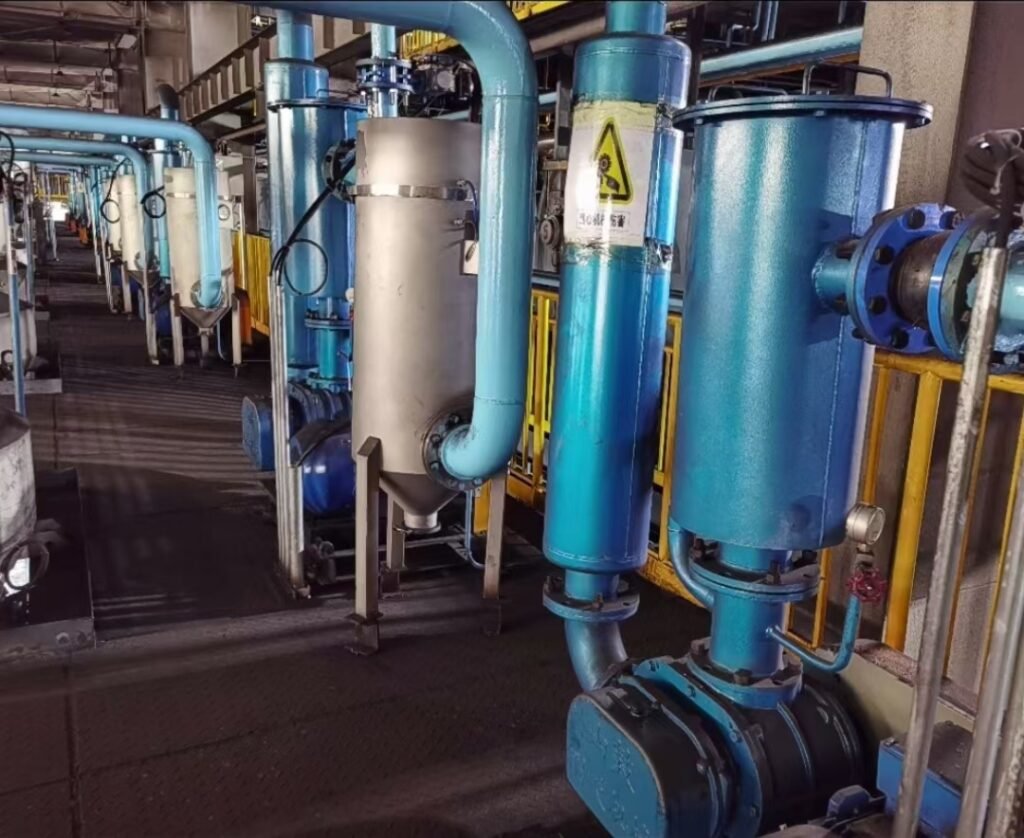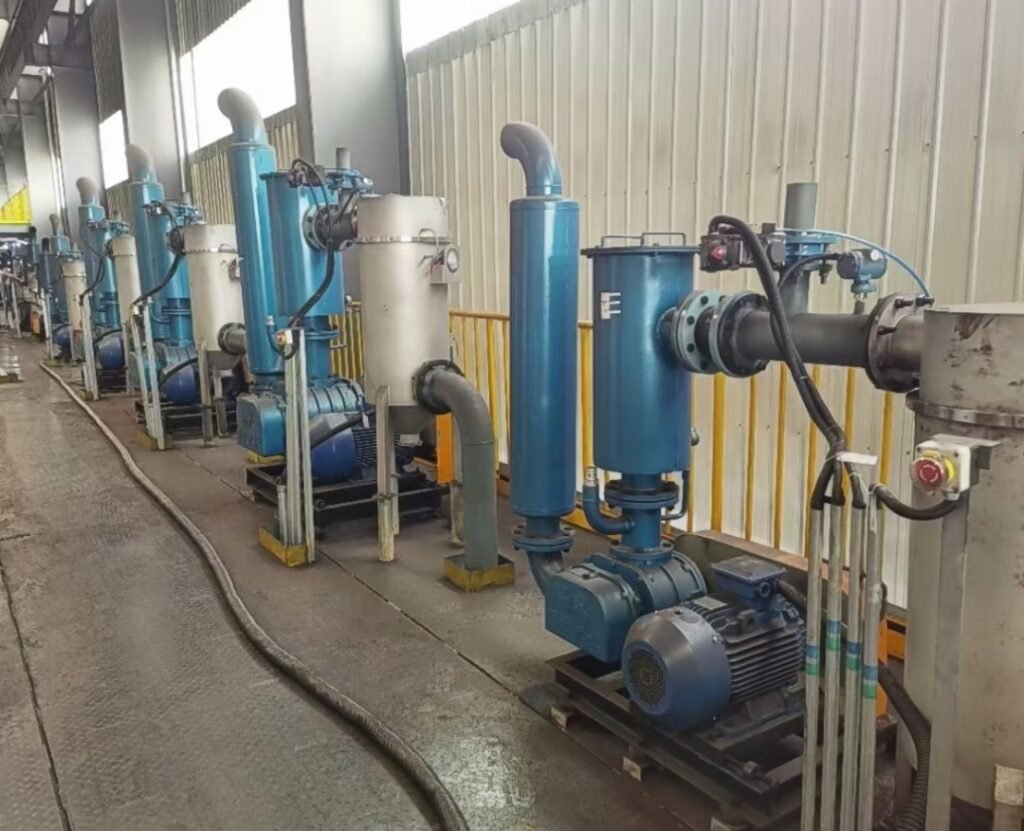Roots blowers play a crucial role in the papermaking industry, providing reliable and efficient solutions for various processes. Below are the key applications of Roots blowers in paper production:
1. Moisture Absorption System
During papermaking, pulp undergoes dewatering and drying processes. Roots blowers are widely used in moisture absorption systems to create negative pressure, extracting water from the pulp and accelerating the drying of paper.
2. Vacuum Adsorption System
In paper manufacturing, Roots blowers are employed in vacuum adsorption systems to generate strong suction. This ensures that the pulp or paper sheets remain firmly attached to conveyor belts, facilitating subsequent processes such as cutting, folding, and further processing.
3. Ventilation and Exhaust System
Papermills require proper ventilation and exhaust systems to maintain a stable and safe production environment. Roots blowers efficiently circulate air, regulating humidity, temperature, and gas concentrations to ensure optimal working conditions.
4. Pumping System
During pulp preparation, Roots blowers serve as power sources in pumping systems. They transport pulp between different processing units, such as from mixing tanks to paper machines or from paper machines to drying equipment.
Key Considerations for Selecting Roots Blowers in Different Systems
A. Moisture Absorption System – Airflow and Pressure Selection
- Pulp Characteristics: Factors such as concentration, viscosity, and particle size influence airflow and pressure requirements.
- Drying Speed: Faster drying demands higher airflow to ensure efficient moisture removal.
- Paper Size & Thickness: Larger and thicker sheets require greater airflow and pressure for effective absorption.
- System Compatibility: The blower must match the exhaust capacity of other equipment (e.g., filters, dryers).
- Production Needs: Consider production scale, capacity, and paper type to determine optimal blower specifications.
B. Vacuum Adsorption System – Airflow and Pressure Selection
- Adsorption Requirements: Determine airflow and pressure based on object type, size, weight, and required suction strength.
- System Design: Longer or complex pipelines may need higher airflow to overcome resistance.
- Vacuum Level: Applications may require low, medium, or high vacuum, affecting blower selection.
- Blower Capabilities: Check technical parameters (max airflow, pressure, speed) to ensure suitability.
- Safety Factors: Over-adsorption prevention, overload protection, and fault response mechanisms should be considered.
C. Pumping System – Airflow and Pressure Selection
- Pumping Requirements: Consider medium properties, flow rate, distance, and elevation differences.
- Pipeline Design: Longer pipes or complex layouts may require higher airflow and pressure.
- Medium Characteristics: Viscosity, concentration, and particle size impact blower performance.
- Blower Specifications: Select based on max airflow, pressure, and speed to meet system demands.
- Safety Measures: Overload protection and anti-clogging features are essential for reliable operation.
Conclusion-Roots Blowers in Papermaking Industry
Roots blowers are indispensable in the papermaking industry, enhancing efficiency in moisture absorption, vacuum adsorption, ventilation, and pumping systems. Proper selection of airflow and pressure depends on material properties, system design, and production needs. Consulting with Roots blower suppliers for technical support ensures optimal performance and longevity in paper manufacturing processes.
By carefully evaluating these factors, paper mills can maximize productivity while maintaining high-quality output.


